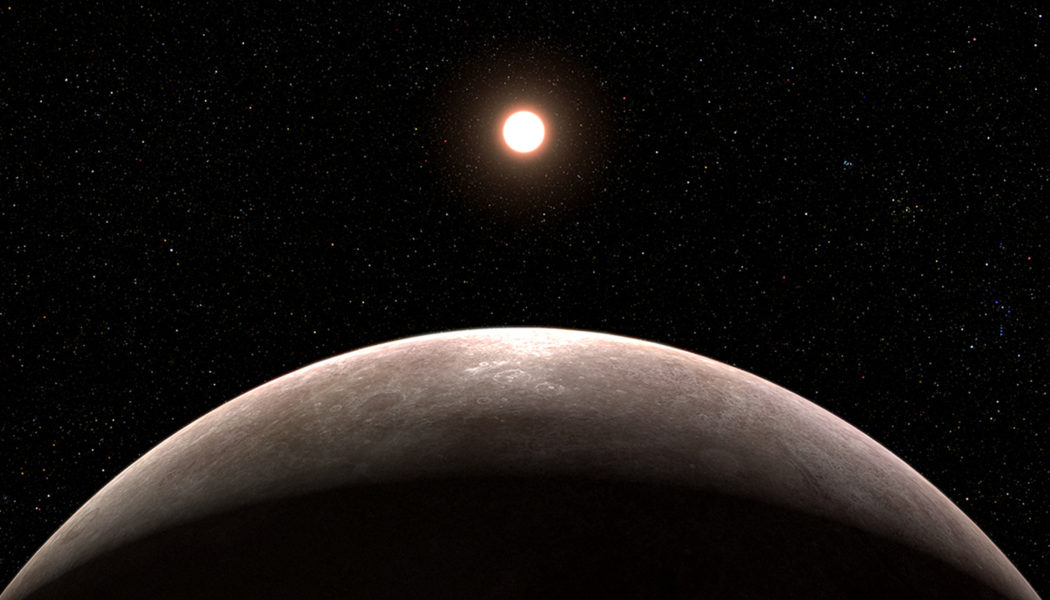LHS 475 b is a rocky exoplanet roughly the same size as Earth that orbits very close to a small, dim star. And for the first time, researchers are able to study the planet’s atmosphere.
:format(webp)/cdn.vox-cdn.com/uploads/chorus_asset/file/24354659/STScI_01GNVTTVYW4VG78HYYQE7CFXE1.png)
The James Webb Space Telescope has discovered its first new exoplanet, an Earth-sized rocky planet called LHS 475 b. Located just 41 light-years away, the planet orbits very close to a small, dim star, completing a full orbit in just two days.
The discovery, presented at the American Astronomical Society (AAS) meeting on Wednesday, January 11th, is notable as most exoplanets discovered are typically large gas giants similar to Jupiter. It is harder for most telescopes to detect Earth-like planets because they are much smaller, at less than a tenth of the diameter.
Previous research with NASA’s Transiting Exoplanet Survey Satellite, another space-based telescope that was launched in 2018 specifically to search for exoplanets, had indicated that there could possibly be a planetary candidate in this system. JWST was able to confirm the planet’s presence from observations made in August and September 2022.
The fact that JWST was able to detect this planet indicates it will be able to identify more Earth-like planets in the future. And even more than that, it should be able to detect their atmospheres — something other telescopes cannot do with planets of this size.
:format(webp)/cdn.vox-cdn.com/uploads/chorus_asset/file/24354661/STScI_01GNVWZ3CKZ9DT4EV4N2TPMRPH.png)
The ultimate aim of much current exoplanet research is to understand the atmospheres around exoplanets. In order to better understand whether certain planets are habitable, astronomers need to study their atmospheres, as this can have a profound impact on factors like surface temperature.
“Over the next few years, and ultimately decades, the search for life on exoplanets will fundamentally rely on the detailed characterization of exoplanet atmospheres,” said lead researcher Jacob Lustig-Yaeger of the Johns Hopkins University Applied Physics Laboratory at the AAS meeting. “And the first step on this journey is simply to detect the presence of exoplanet atmospheres.”
Even though JWST should be able to detect exoplanet atmospheres, the task remains challenging. Exoplanets are much smaller than stars and give off much less light, so they are rarely detected directly. Instead, astronomers study host stars and look for small deviations in their brightness or motion, which indicate the presence of a planet orbiting them.
Given these conditions, JWST will likely only be able to detect atmospheres of rocky planets orbiting very small stars called red dwarfs, Lustig-Yaeger explained. In some ways, that is good for hunting for habitable planets, as these rocky worlds are similar in size to Earth. However, these types of planets orbit much closer to their stars than Earth orbits the sun, and so are much hotter. When a planet gets that close to its host star, it can have its atmosphere stripped away by the star’s heat and radiation.
In the case of the recently discovered exoplanet LHS 475 b, JWST observed two transits (in which the planet passes in front of its host star, causing a temporary and very small dip in the star’s brightness), which both confirmed that the planet was present and allowed the team to work out its radius.
They also used a method called transmission spectroscopy to look at its atmosphere, and although they weren’t able to confirm exactly what the atmosphere was, they were able to rule out various options. The findings show that the planet doesn’t have a hydrogen-dominated atmosphere like Jupiter or a pure methane atmosphere. It could possibly have a thick carbon dioxide atmosphere like Venus, or it could have no atmosphere at all — having had its atmosphere stripped away by its star.
“The observatory’s data are beautiful,” said fellow researcher Erin May in a statement. “The telescope is so sensitive that it can easily detect a range of molecules, but we can’t yet make any definitive conclusions about the planet’s atmosphere.”
The research team has another observation of the planet planned using JWST this summer, which should help them learn more. And the research demonstrates just how powerful a tool JWST is for learning about exoplanets: “Even though we don’t detect an atmosphere in this case, our measurements meet the sensitivity requirements to be able to detect the atmospheres of Earth-sized planets. So it’s a really exciting time,” Lustig-Yaeger said. “We’re just starting to scratch the surface of what is possible with JWST.”









